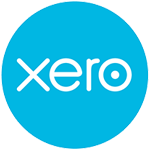Xero migration is an exciting endeavour that brings in much more collaboration and transparency into the business. However, it may have a few pitfalls, and you must prepare for them.
Planning Xero Migration
Planning is important to move your accounts to Xero. It requires adequate preparation to make sure that the program works efficiently and the resources, as well as time conversion, is perfect.
Before beginning, it is crucial to speak to the client, or the business, and discuss their expectations from the new accounting system. This is an important step to understand the operations of Xero. It would allow the team to plan their needs, set up essentials, and apps they could choose.
Lastly, the deadline should be clear in order to make sure it is achievable and there is no delay.
Having said that, there’s another important step often overlooked when planning Xero migration. Having the right team of staff to undertake the migration tasks is vital for the process. They should be well trained and knowledgeable enough to carry out processes in sets for seamless xero conversion.
Pre-Xero Migration Checklist
- If you are planning to convert from an accounting program to Xero, take time and clean up all pending accounts, credit notes, and payments allocated for your customers and suppliers
- When you are converting from another accounting program, make sure that all previous reports and related information are downloaded in an Excel sheet.
- Take a print of the Trial Balance and compare to Xero as soon as the conversion happens. This step is to ensure that the conversion process is accurate and matching the previous software, you were using.
- Export or print the complete list of creditors and debtors to compare in Xero after conversion.
- Export and print detailed nominal ledger and general ledger activities to cross-check if it needs to be converted to Xero and for historical purposes as well.
- If you do not want to use any automated conversion company for Xero migration, make sure the accountant gives you a set of opening balances and conversions to enter into Xero in your conversion balance section. It is also necessary to ascertain that you are provided with the complete breakdown of creditors and debtors.
Moving to Xero
When you want to move to Xero, there are multiple factors to consider. It all begins with planning the process of migration through customizing Xero and training the team. It is important to ensure that the set up is ready for the business to start using the platform confidently.
Firstly, you have to decide the time to migrate to Xero. Make sure it is sometime around the end of the fiscal year.
Next, you have to ascertain the information you want to transfer from an old system to Xero. This would boil down to factors such as what the company wants, how they want to monitor the results if they want to compare to previous results and other related factors. All such factors should be taken into account.
If previous results were required, then it would be necessary to transfer all historic data into the new Xero process. In such cases, using a software program for transfer would be effective to streamline the process.
Once historic data is converted, it may be used to prepare KPI reports as well as analyze trends that are automated through apps like Spotlight or Futrli.
However, in case if historic data is not required, the process of conversion becomes simpler and straightforward. Simply monitoring the conversion trail balance to Xero is enough. Nevertheless, in all cases, make sure to clean up data before transferring so that it is error-free and up-to-date.
Select a Process to Manage Business using Xero
- Select a business process to begin with Xero. How do you want to post the bills and push them into Xero? Do you want to use a traditionally time-consuming process like data entry or an advanced program like Xero Touch or Receipt Bank? Even if you use the advanced techniques, it is important to check and get approval. Nonetheless, it can save time and cost. So, it is highly recommended.
- Review accounts and dashboards you wish to add to the watch list. It could give you to monitor and control the important areas of business.
- Select the structure of Chart of accounts
- Decide on the tracking structure if needed for your business
- Invite your users, especially those who need to have access to Xero – bookkeeper, accountant, partners, and others. Explain what they should access. Allow limited access – standard or read-only.
- Understand the reporting structure and review it properly. Would you want to prepare a budget? Would you like to make it a monthly habit?
- Customize all reporting templates instead of using general P&L report layout to customize how to see the reports.
- Set up all supplier invoices, including recurring in repeated invoices section. Do it for sales invoices with fixed fees that you can prepare and repeat, thus saving time on your monthly invoicing.
Customizing Xero to Business/Client
Clients expect tailored solutions. When you are about to deliver Xero, make sure it is customized as per the client’s requirement and ready to use. Undertake the following steps to set up Xero:
- Enter Fiscal Year End: Go to the Financial Settings and enter the fiscal or business year-end. This ensures that reports run according to the date figures correctly and would know when the year needs and a new year begins.
- Update Settings: Update all the necessary scheme settings with Xero under the Financial Setting section.
- Up-to-date Taxation: Before conversion, make sure your client has cleared all taxes and records are up-to-date.
- Format Chart of Accounts: While setting up, it is important to customize the chart of accounts according to the client’s specifications. This is supposed to be done before entering the opening balance. It is possible that the client would like to use Xero standard chart of accounts instead of other formats. In that case, you can add new accounts to the existing chart of accounts later.
- Import Contacts: If you enter the entire contact list from the previous accounting software, the client would be happy. Importing all contact details, including suppliers and vendors, would mean that Xero is ready to roll. The fastest way of adding this information is by using Xero’s template available for download.
- Invoice Settings Customization: Clients usually need help to ensure their invoice settings are correct. Discuss the issue with your client before starting the set up so that you know what type of information is required on the invoice and request them to send the same along with their business details, logo, and payment terms. You may also request details of quotes, remittances and purchase orders together with sales invoice to set up.
- Prepare Bank Feeds: Bank feeds are essential, as these are easy to upload and reduce work time. Using bank feeds to ensure that all banking transactions directly uploaded into Xero. It also allows users to monitor the business cash position using updated information.
Xero provides two different types of bank feeds to clients – Direct and Indirect. While Direct Feeds require users to enter into an agreement with Xero, Indirect Feeds do not require agreements.
Bank feeds are crucial to import bank transaction details into Xero. Nonetheless, a direct feed is often more reliable as it extracts information from the existing bank to Xero directly, thus reducing risks of errors.
Before clients consider Xero migration, it is your role to explain the benefits of direct and indirect bank feeds. Understand their requirements and expectations and deliver customized services.
- Know the Users: Always request the client to provide user details with names, email addresses, and contact numbers. If your client wants to give access to Xero to its users, details must be fed during conversion. When you have the information, you can feed it into the Xero framework and set up. Do not hesitate to leave some names for the client because they should also know how to add new users any time.
Undoubtedly, moving your client to Xero requires some planning. If you follow the aforementioned steps, you would be able to successfully ensure that the Xero set up meets the needs of your clients and they can use it immediately.
Final Word
For a seamless conversion, make sure you use a Xero certified advisor. The cost of installing and bringing the historical data correctly is very meager as compared to its use in the long term. You must use an experienced accountant or conversion specialist to assist in the transition process and make it as smooth as possible.
MMC Convert specializes in Xero migration. The company believes in training clients to use Xero, discuss the business with them, analyze trends, and provide solutions. This allows them to train the client team to understand the new Xero infrastructure better and eases use.
Get Xero ready with MMC Convert.





Speak Your Mind